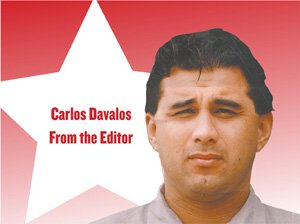How many affordable homes and mixed-use developments could fit on the large chunk of open space in Chula Vista, bordered by Third Avenue on the west, L Street to the north, Moss /Naples street to the South and Corte Maria Avenue out east?
The ocean of swath is not entirely open space. Given that it’s the home of the San Diego Country Club and golf course, passers by would see some structures dotting the plains of Chula Vista. A clubhouse/dining room and maintenance shacks come to mind. But, for the most part, that roughly 160 acres is mostly green. A blank canvas I’m sure any developer would love to have their way with.
The area is so large, green and unsullied that it’s easily identifiable from a satellite view provided by a monolithic online search engine.
Much easier to spot then, say, Harborside Park.
I’m not advocating for the conversion of a private club and golf course into yet more housing in the county’s second largest city.
Nor am I entirely against the idea.
Years ago a former councilman had casually mentioned that he would have liked to see the land converted into a large municipal park, similar to San Diego’s Balboa Park, a landmark public space that would serve all of Chula Vista and double as a beacon to visitors and tourists. That was an exciting idea.
But the golf course does serve as introduction to a question worth considering: Which spaces are off limits to development and for how long?
As housing experts, urban planners and politicians continue to say a housing shortage creates and exacerbates problems on communities, the solution to build more homes. Condominiums and apartments and mixed use structures, actually.
But as anyone who glances at satellite views of the cities and world we live in we see that space is running out.
Do we raze single-family tracts and turn them into multiple household hubs? Dorms for the grown up class? Do we forsake neighborhood parks, in part or their entirety, so that we can build a 90/10 affordable housing development (the 10 percent, of course, set aside for low-income families)? Do we convert, at significant expense, empty office buildings into homes for the downtown crowd?
Time, and space, are running out. What ideas are worth pursuing?











